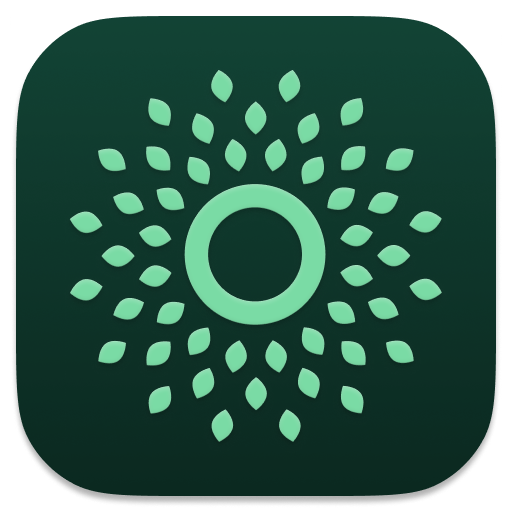As a manager at Stanford, Chiara uses Canopy to give feedback, coach, and successfully retain her new team.
“I very much credit Canopy with giving me the skills and tools to foster an environment where team members do want to stay.”

Meet Chiara Bertipaglia
- ✓ Head of Programs and Training at Stanford’s Wu Tsai Neurosciences Institute.
- ✓ Formally a people manager since January 2022. Previously was a manager at Columbia University’s Zuckerman Mind Brain Behavior Institute.
- ✓ 4 direct reports.
Chiara is a fast learner. While Chiara’s first formal leadership role was just a few years ago, she uses concepts she learned from Canopy to successfully transition into her most recent leadership role at Stanford’s Neuroscience Institute. She calls Canopy the “foundation of my leadership knowledge.”
One direct report at Stanford, who was contemplating leaving, even admitted to Chiara that they decided to stay at the organization because she was now their manager. 🤯
Here’s a bit about Chiara’s experience with Canopy in her own words…
Learned how to run effective 1:1s from Canopy
Because of Canopy, I was able to level-up my one-on-one meetings with direct reports. I learned how the most effective one-on-ones aren’t just a giant status update, but rather a synchronous opportunity to really understand how to best support a team member, uncover issues, and hear feedback that might not be typically discussed otherwise.
With this in mind, I’ve built upon what I’ve learned from Canopy and l run “reflection meetings” with my team, to help support and develop my team even further. I draw heavily from a mix of the questions that Canopy recommends for “stay” conversations, job satisfaction conversations, and feedback conversations to create an environment for a direct report to be motivated. It’s quite amazing to watch the impact that these thoughtful, high-quality questions that Canopy provides really has on our team members.
Uses Canopy framework on feedback all the time
I use so many of the Canopy leadership frameworks day-to-day… But the Canopy framework on feedback is one I use constantly. As a leader, feedback is notoriously always tricky to deliver — and Canopy gives such a clear, actionable framework that I apply often. Specifically, I’ll state the impact of the observation I’m having, rather than making the feedback a judgment that’s being cast on an employee. Then I’ll ask for permission to share the more subjective observations that often accompany feedback, and will involve the other person in devising ways to action positive change in the immediate future. This lays the foundation for a conversation grounded in empathy, fallibility, and curiosity. With this, the feedback is then so much more likely to be received well and internalized by the other person.
Received feedback: “You’re such a good manager”
I’m sheepish to admit this, but I have been fortunate enough to receive some incredibly generous, meaningful feedback from my direct reports about my leadership skills. One direct report would often say how my leadership helped them feel “so respected” and “so valued” — and even outright told me “you’re such a good manager.” (I know, I blushed!) I fully attribute Canopy Team for receiving that feedback.
When I did end up leaving Columbia University, one direct report in particular was quite disappointed that I was leaving. They shared how the structures I’d set in place — due to what I learned with Canopy — had positively helped them perform at a high level, and was a strong contrast to their previous job.
“Canopy is my foundation of leadership”
Peers who seek to move into leadership roles have asked me where I learned the fundamentals of leadership. “How do you get to the place you are now?” they’ve asked. I deflect, saying without hesitation: Canopy is the foundation of my leadership knowledge. Perhaps I’ve also tweaked and supplemented that knowledge over time in my own way of implementing the Canopy frameworks with others I’d learn through experience or other training… But Canopy is the first platform I found producing content that deeply resonated with me as a leader: It’s research-backed and data-driven, yet also human and empathetic in approach. I started absorbing everything they’ve produced over the years, as a result.
Retained an employee about to quit because of her leadership
With my role at Stanford, I inherited an existing team. When I arrived, one team member who’d been there for a while had expressed to me that they were planning to stay on the team for just one more year, and then were planning to move on.
Of course, I said that’s absolutely fine, and team members should feel comfortable leaving when it makes sense for them. However, after this person started spending more time on the team with my arrival, they came to me with a different view: They told me they realized how much they like this new environment I’d created and they see opportunities for growth — and so they decided to stay.
I was blown away by this employee’s decision to stay. And, I very much credit Canopy with giving me the skills and tools to foster an environment where team members do want to stay.

Canopy helps keep her accountable + apply frameworks: “I can walk the talk”
As a leader, it’s so easy to feel so busy and overwhelmed. I know for myself personally, I can feel very reactionary to the to-do list or fires burning in front of me. But with Canopy, having a set of frameworks helps to hold me accountable in a positive way. I’m able to follow through so much more as a leader, rather than rely on my good intentions alone. I’m enormously thankful for the many different learning opportunities thatCanopy offers: With Canopy, I can now walk the talk as a leader.
Uses Canopy framework on trust
Trust is one of those “touchy feely” concepts that I think can be deceptively difficult to put into practice as a leader. And so I appreciate how Canopy shares a very tactical framework around trust — specifically “cognitive trust” — which is one I directly use with my team.
From Canopy, I learned how cognitive trust is what researchers have noticed is most effective for building trust: It’s the ability for people to feel they can rely on you. And so, based on this research and what Canopy shares, I actively try to employ cognitive trust: being vulnerable, explaining the “why” behind decisions, and following through on commitments. I find that the more vulnerability and openness that I show to my team, the more my team in fact feels supported and heard. Even if I cannot be fully transparent for particular organizational reasons, because of what I’ve learned from Canopy, I can still share as much context as possible and be vulnerable in wanting to hear my team out. I think it’s led to a real sense of inclusion and belonging in our team, which I’m very grateful for.
Content is NOT too corporate
Many people are (justifiably) afraid that leadership content will feel too corporate. No one wants to spend their precious time on material that doesn’t feel relevant or isn’t striking the right chord with you. As a result, I’ve noticed for myself, finding someone who speaks a language that doesn’t put you off as a leader is a must. And Canopy absolutely speaks a language that resonates — at least for me, if that’s helpful for others to know!

Want to level-up like Chiara?
Try Canopy yourself, and level-up with our personalized, bite-sized leadership learnings.
Start for freeor request a demo for your team
